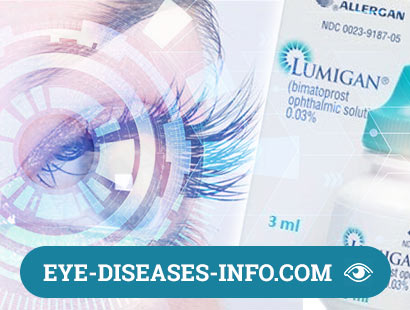Ophthalmic hypertension
Ophthalmic hypertension is an increase in intraocular pressure above 20 mmHg. st. in the absence of glaucomatous changes of the fundus. Common symptoms for all forms are headache, blurred vision, discomfort in the orbital area. The complex of diagnostic measures includes tonometry, eye biomicroscopy, gonioscopy, tonography. In case of ocular hypertension, antihypertensive therapy is indicated, which is reduced to instillation of beta-adrenergic blockers or their combination with M-cholinomimetics, carbonic anhydrase inhibitors. The treatment of the symptomatic form is based on the elimination of the etiological factor.

Ophthalmic hypertension is a widespread pathology. In 35% of cases it has a stable course, in 30% it regresses with age, in 35% it leads to the development of glaucomatous changes in the area of ??the retina and optic nerve head (DON). According to the statistics available in ophthalmology, nosology is diagnosed in 7.5% of the population over the age of 40 years. After 50 years, this figure reaches about 20%. Patients with elevated intraocular pressure are at risk of developing glaucoma. It has been proven that in the absence of correction of the IOP for 10 years, complications occur in 5-9.2% of patients. The disease occurs on average 10 times more often than glaucoma.
Causes of Ophthalmic Hypertension
The cause of the essential form is age-related changes in the circulation of aqueous humor. The disease occurs against the background of hormonal imbalance in women of menopausal age. The development of the symptomatic form of lead:
- The use of corticosteroids. The hydrodynamics of the eye is disturbed both with long-term instillations of hormonal drugs, and with their oral administration. Local application of glucocorticosteroids causes an increase in IOP after a few weeks, systemic - in 2-4 years. Intensive therapy with steroids potentiates the increase in Ophthalmotonus 1-2 hours after drug administration.
- Traumatic injuries. The reactive nature of the disease is associated with irritation of pain receptors on the surface of the iris and cornea. Acute ophthalmic hypertension occurs in response to dislocation of the lens.
- Surgical interventions. An increase in Ophthalmotonus provokes obstruction of the drainage network with lens fragments, pigment, or pseudoexfoliation material. Ocular hypertension develops with the use of viscoelastic drugs during surgery. In the postoperative period, the increase in IOP is associated with a local inflammatory reaction, pupillary and ciliary block.
- Posner-Schlossman syndrome. This pathology causes glauco-cyclic crises, which are accompanied by a sharp increase in pressure without changes in the CPC.
- Intoxication. Increased IOP provokes chronic intoxication with tetraethyl lead, furfural poisoning or uncontrolled administration of drugs containing sanguinarine.
- Uveitis. Inflammation of the uveal tract provokes an increase in fluid secretion, swelling of the trabeculae and accumulation of exudate in the CPC, which leads to a transient increase in IOP.
- Endocrine diseases. Ophthalmic hypertension causes a hormonal imbalance on the background of hypercorticism or hypothyroidism in the anamnesis.
Pathogenesis
The mechanism of development of ocular hypertension directly depends on the form of pathology. With the essential nature of the disease due to the violation of the outflow of the Hematologic hypertension, even its moderate secretion potentiates the increase in pressure. Normally, elderly patients have difficulty in circulating intraocular fluid associated with its reduced production, and therefore ophthalmopathology does not develop. The onset of symptomatic ophthalmic hypertension is caused by an increase in the production of the Hematology of the Blood or a reversible violation of aqueous humor, which causes swelling of the trabecular network, accumulation of exudate or blood in the area of ??the anterior chamber angle (CPD).
In individuals with this nosology, a imaginary or true overproduction of intraocular fluid is observed in history. This is due to the intensive blood supply to the eye membranes, the high functional ability of the ciliary body. In the pathogenesis of the steroid form of the disease, inhibition of protease and phagocytosis of trabecula endothelial cells plays a leading role. Impaired ion exchange leads to sodium retention and edema of the drainage network. Polymerization of molecules on the surface of trabecular tissue potentiates an increase in the nucleus and cell size. Corticosteroids inhibit the production of prostaglandins, whose function is to reduce IOP and improve the flow of IGL.
Classification
Ocular hypertension has many options for development. According to etiology, the disease is classified into uveal, reactive and steroid forms. From a clinical point of view, there are:
- Symptomatic ophthalmic hypertension. A temporary increase in IOP develops against the background of a pathological process unrelated to glaucoma.
- Essential ocular hypertension. It is characterized by a slight increase in intraocular pressure with normal rates of outflow of high blood pressure.
- Pseudohypertension of the eye. This is an excess of intraocular pressure, which occurs as a result of stress in front of visometry in healthy people.
Symptoms of Ophthalmic Hypertension
Clinical manifestations of pathology are determined by the developmental variant. Essential ocular hypertension is characterized by a stable or regressive course. This is due to the fact that with age, the intensity of the production of THB is gradually reduced. In most cases, ophthalmic hypertension occurs symmetrically in both eyes. Patients noted frequent headache. The exception is the symptomatic form against the background of a glauco-cyclical crisis. In this pathology, one eye is affected. During the crisis, patients complain of discomfort, the appearance of "fog" and rainbow circles before their eyes. Pain syndrome is usually absent.

In the case of the steroid type of the disease, the intraocular pressure rises gradually. In the case of the reactive variant, the signs of ocular hypertension increase for 2-6 hours after injury or surgery. Patients complain of a feeling of a foreign body, blurred vision, severe pain. Rarely observed dyspeptic manifestations (nausea, vomiting). The specific symptoms of the uveal form include hyperemia of the eye, photophobia and increased tearing. The disease can lead to an irreversible decrease in visual function.
Complications
A common complication of symptomatic ophthalmic hypertension is secondary glaucoma, which is a consequence of irreversible changes in the trabecular apparatus. Unwanted effects of the steroid form are represented by corneal thickening, formation of posterior capsule cataract, formation of ulcerous defects on the surface of the cornea. Atrophic changes in the eyelids, the occurrence of ptosis. Reactive variant of nosology is complicated by hypertensive epithelopathy. Uveal ophthalmic hypertension with panuveitis leads to irreversible loss of visual functions.
Diagnostics
Diagnosing the disease is a big deal. Measurement of IOP causes psychological stress in the patient, which often provokes an increase in intraocular pressure and the occurrence of false ocular hypertension. A special ophthalmologic examination requires:
- Tonometry. The objective criterion for ocular hypertension is an increase in IOP over 20 mmHg. st. with two consecutive measurements. In symptomatic form, the numbers of IOPs can reach 40-60 mm Hg. st.
- Biomicroscopy of the eye. This is the only method that allows to establish the diagnosis of symptomatic ophthalmic hypertension in case of Posner-Schlossmann pathology. Biomicroscopic picture includes a slight swelling of the cornea, small precipitates, which disappear in 2-3 days after the crisis. With reactive form, corneal edema is determined.
- Tonography. The study of eye hydrodynamics makes it possible to graphically record changes in IOP parameters. On the measurement of the minute volume of intraocular fluid and the coefficient of ease of its outflow is based verification of the form of the disease.
- Gonioscopy. With this nosology, the open eye eye CPC is visualized. The depth of the camera is within normal limits. Patients with a reactive form in the anterior chamber are determined by the remains of viscoelastic.
For differential diagnosis with glaucoma, gonioscopy, ophthalmoscopy, perimetry and visometry are performed. In contrast to glaucoma with ophthalmic hypertension, the intraocular pressure indices do not affect the visual functions, the CCP remains unchanged. Pathology is not accompanied by changes in the optic disc and the inner membrane of the eyeball. The boundaries of the field of view correspond to the reference values.
Ophthalmic Hypertension Treatment
Therapeutic tactics is reduced to the appointment of antihypertensive drugs. The target level of intraocular pressure is 20-13 mm Hg. st. Begin treatment with the appointment of one drug from the group of beta-blockers. With low efficacy, combination therapy is indicated. The most common treatment regimen includes the use of two β-blockers. In the absence of effect, ophthalmologists prescribe a combination of β-blocker with M-cholinomimetic or carbonic anhydrase inhibitor. When choosing a combined tactic, 2-3 times a year, it is necessary to change the treatment regimen in order to prevent the development of drug tolerance. The leading role in the treatment of symptomatic ophthalmic hypertension is the elimination of the causative factor.
With the steroid nature of the disease, intraocular pressure returns to normal within 2-3 weeks after corticosteroid withdrawal. If there is a need for continued therapy, a replacement with non-steroidal anti-inflammatory drugs is indicated. Antihypertensive drugs are prescribed only when IOP reaches 40-60 mm Hg. st. The tactics of treatment of the reactive form is reduced to the local use of drugs of the β-blockers group, carbonic anhydrase inhibitors or α-adrenomimetics. With an increase in IOP after the operation due to the accumulation of viscoelastic or uniform elements in the anterior chamber, it is decompressed. Identification of a mechanical obstacle in the way of outflow of IHL requires its removal surgically.
Prognosis and prevention
The prognosis for life and in relation to visual functions in ophthalmic hypertension is favorable. The cause of complete loss of vision may be the uveal form, which is often associated with a long course of panuveit. Specific preventive measures are not developed. Nonspecific prophylaxis is reduced to the elimination of hormonal imbalance, the appointment of antihypertensive therapy on the eve of surgery. Patients working with tetraethyl lead and furfural are recommended to use personal protective equipment (glasses, masks). When taking medications with sanguinarine and corticosteroids, it is necessary to control the level of IOP.
 US
US
 AU
AU UK
UK CA
CA DE
DE FR
FR IT
IT ES
ES DA
DA FI
FI NO
NO NL
NL SV
SV



